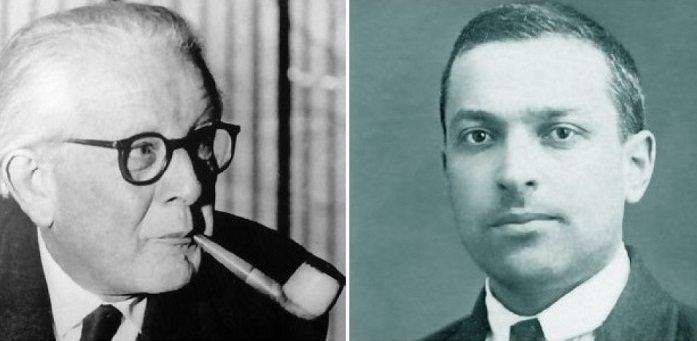Therapeutic companion What functions fulfills?

- 3335
- 334
- Miss Drew Stroman
The therapeutic companion is a human resource prepared for Attend people who are going through some circumstance or process that affects their health. How can it be a crisis, disease or disability at some point in your life. It is an emerging profession that can be key in the rehabilitation processes for patients that requires more constant support.
Next, in this article we will know more about what functions these professionals fulfill and what are the limits of their work. As well as the reason why it is different from being a caregiver.
Content
Toggle- What is a therapeutic companion?
- Advantages of a therapeutic companion
- Principal functions
- How to request the services of an A.T.?
- References
What is a therapeutic companion?
It is possible to affirm that the therapeutic companion (a.T.) is a health agent that is located in everyday to act. In this way, it is able to operate on the subjective, affective, community and social. Likewise, it is responsible for empathically containing the patient and family through listening, support and understanding. However, we must not confuse the task of a.T. With that of a caregiver.
In this sense, the A.T. He has theoretical and practical knowledge that allows him to travel with his accompanied the processes he lives. In a way that fulfills a role with focus on support and support in the face of the ailments of its assisted.
The possibility of providing support, as well as other companions functions are agreed with the acting professional. The character of this approach is flexible, so it includes the possibility of implementing proposals, stimuli and adjustments. In addition, the.T intervenes, moderates, induces, avoids, program, implements mediation, limits, etc. Which gives a therapeutic dimension to your work.
Due to the above, The work of the therapeutic companion adapts to the characteristics, needs and situation of each patient. Therefore, he works in the different areas where the subject of attention is located, either at home, on public roads or in institutions.
Advantages of a therapeutic companion
If we analyze what we saw before, it is easy to realize that having the support of a.T. It can be very beneficial. It is important to note that the A.T. They can attend people who have physical and/or mental pathologies. Among the main advantages of having these types of professionals, we can mention the following:
- Promote the containment of the person in crisis and his family in clinical emergency situations.
- Facilitate the autonomy and self -confidence of the patient in the future of the therapeutic accompaniment process.
- Provides permanent attention and personalized monitoring of the subject's evolution. Promotes educational, labor and recreational reintegration.
- It allows to sustain family and social ties that are convenient based on therapeutic treatment.
- Promotes early detection of symptoms before a possible relapse, reducing risks through adequate containment.
- It helps to a cost reduction in treatments, by providing alternatives to frequent coding and hospitalization.
 Differences and similarities between the evolutionary theory of Piaget and Vygotsky
Differences and similarities between the evolutionary theory of Piaget and Vygotsky Principal functions
Now that we know better what are the advantages offered by a therapeutic companion, we can ask ourselves: how are these benefits? We must keep in mind that.T. He is a professional who intervenes in different dimensions of the person's life. Therefore, their functions are varied, but we could highlight the following:
- Motivate the continuity of treatments, accompanying the emotional changes of the patient in relation to the same. It also promotes human resilience and hope planning.
- Favor the exchange with the social environment, functioning as a fellow man with whom to share recreational, labor and/or educational activities. In turn, it is present in the places where the accompanied develops its activities, such as public roads.
- Offer a dialogue space where the subjective can be expressed through the word next to an empathic listening.
- Accompany the patient and his family in their affective paintings, mediating in possible conflict situations, aiming to generate convergence.
- Promote quality and lifestyle, reducing risk factors and enhancing protective factors.
- The therapeutic companion encourages the creative capacity of the patient, favoring active adaptation and providing an expression way.
- Favor the development of the patient's healthy potential, promoting the possibilities and abilities of the subject. This at the same time that supports the mood and performing activities.
- Cooperate with the construction of daily life and links for the patient.
- Facilitate the conditions that allow the design of healthy habits.
- Intervene in interpersonal situations where the patient can be harmed.
How to request the services of an A.T.?
Clarified the above, it is essential to highlight that a.T. It works within the framework of a multidisciplinary team. This means that it is always part of a team where there can also be psychologists, doctors, physiotherapists, etc. The functions of this professional are enthusiated to the needs determined by these professionals to seek the quality of life.
For that reason and by way of conclusion, The services of a therapeutic companion should be recommended by a specialist. Only a doctor, psychologist or therapist is trained to decide if it is necessary to have daily assistance. As well as determining what are the functions that the companion should or not while being next to the patient.
References
- Tolosa, d. O (2015). Practical Manual: from accompaniment to the therapeutic assistant. Editorial Akadia.
- Tolosa, d. O & Ferraris Mukdise, G. (2017). Practical guide for eating disorders for therapeutic companions. Editorial Akadia.
- « Sexual conversion therapy a prejudiced and dangerous practice
- Body neutrality and non -body positivity »

